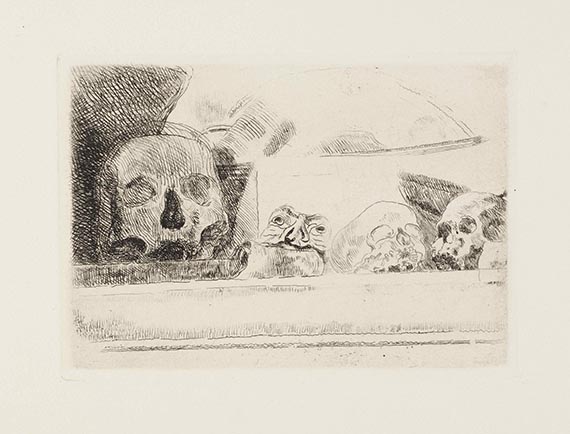
Classicism
The term "classical" comes from the description "classicism". This refers not only to the particular blossoming of a style, but also classical antiquity, which in its completion shows itself worthy of being used as a model. In this sense, both classicism and the Renaissance invoke antiquity.
The question is, how do the two styles distinguish themselves from one another. As the name for an epoch, classicism can be placed in the time period between 1750 and 1840. From a socio-political perspective, this equates to the transition between absolutism and the Enlightenment. Instead of an all-encompassing humanism, now special knowledge is required; also in art, logic and clarity were to reign, mirroring morals and ethos. The method of approach to a work of art becomes increasingly academic, and archaeology is established during this time: in 1738, Herculaneum was excavated, and in 1748, Pompeii.
The scientific investigation of antique buildings meant a new stimulus for the reception of antique forms. The debate initiated by Johann Joachim Winckelmann in 1755 about the supremacy of Greek art over Roman lead the so-called "Greek Revival" movement. Comte de Caylus also advocated Greek antiquity, to which the Roman Piranesi reacted with his treatise "Le Magnificenze di Roma" and whose engravings "Vedute di Roma" spread knowledge of Rome’s antique monuments also north of the Alps. In classic architecture, antiquifying elements return again: porticos, temple facades, pillar arrangements become part of the usual repertoire, such as for example the Propyläen by Leo von Klenze demonstrate. The playfulness of the Baroque and Rococo had to give way for the "noble simplicity and quiet greatness" of classicism, as Winckelmann characterized it. Classicism became the official art style at the French court; because of their socio-political intention, classical buildings are suited for above all representational purposes. As an example one can cite the Arc de Triomphe, built for Napoleon by Chalgrin. Greek temples inspired Karl Friedrich Schinkel for the Neue Wache [New Watchhouse] in Berlin.
Emerging rationalism can also be detected in pictorial design vocabulary. While the color harmonies are cool and reserved, the figures rise from their background in linear fashion; scenic values are renounced. The picture composition follows clear structures, geometry and symmetry predominate. Thematically, the historical picture stands out; however, the representation of mythological themes with antique sceneries is also favored. Figures from the world of the ancient gods are also translated into sculpture. Corresponding to the drawing-like style of the pictures, the silhouette of the figures is linear, seldom far-reaching, often blocky. Pure and noble materials such as marble and bronze predominate. This academic and archaeological classicism developed further towards the end of the century into the very puristic "art of the revolution". This description has less to do with the French Revolution but rather refers more to radical aesthetic changes: thus the tracts by Ledoux and Boullée demonstrate a strict geometrization of architecture.
Other important representatives of classicism are: Robert Adam, Antonio Canova, Jaques Louis Davis, Jean Antoine Houdon, Jean Auguste Dominique Ingres, Leo von Klenze, Claude Nicolas Ledoux, Anton Raphael Mengs, Christian Daniel Rauch, Gottfried Schadow, Karl Friedrich Schinkel, Friedrich Semper, Jacques-Germain Soufflot, Berthel Thorvaldson, Friedrich Weinbrenner.
Related artists: Hackert, Jacob Philipp | Knoebel, Imi | Schinkel, Karl Friedrich

Would you like to sell a work of Classicism?
Infos for seller






